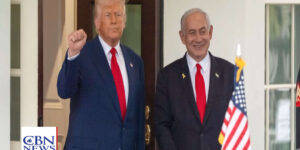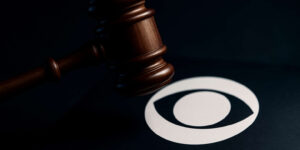Is This the Biggest Deception in the Last 100 Years?
“The greatest lie of the last 100 years is the redefining of what separation of church and state means,” said an attorney with the Alliance Defending Freedom organization. I agree with that statement. It is amazing how many think that separation of church and state means keeping God out of government and the public discourse. That is simply false.
Many people think the separation of church and state is part of the First Amendment, but it is not. The First Amendment reads: “Congress shall make no law respecting an establishing of religion, or prohibiting the free exercise thereof.” Many seem to forget the second part of that statement—”or prohibiting the free exercise thereof.”
What the founders did not want was any one denomination of the Christian religion to run the nation. They wanted to stay away from what they had left in England, where the King was the head of the Church. However, the Founding Fathers and the Supreme Court were quite clear that Judeo-Christian principles made up the established religion of America, and WAS to be involved in the way government would function. This is evident in the Supreme Court decision of 1796, and many other writings.”
Following is a copy of a letter from Thomas Jefferson that further explained his reasoning behind the separation of church and state reference.
Thomas Jefferson’s Famous Letter
On Jan. 1, 1802, President Thomas Jefferson wrote a letter to Danbury Baptist Church of Connecticut. In 1801 the Danbury Baptist Church heard a rumor that the Congregationalist Denomination was going to be made the National Denomination. This disturbed them as it well should. Jefferson answered in his letter:
“To messers. Nehemiah Dodge, Ephraim Robbins, & Stephen S. Nelson, a committee of the Danbury Baptist association in the state of Connecticut.
“Gentlemen,
“The affectionate sentiments of esteem and approbation which you are so good as to express towards me, on behalf of the Danbury Baptist association, give me the highest satisfaction. My duties dictate a faithful and zealous pursuit of the interests of my constituents, and in proportion as they are persuaded of my fidelity to those duties, the discharge of them becomes more and more pleasing.
“Believing with you that religion is a matter which lies solely between Man and his God, that he owes account to none other for his faith or his worship, that the legitimate powers of government reach actions only, and not opinions, I contemplate with sovereign reverence that act of the whole American people which declared that their legislature should “make no law respecting an establishment of religion, or prohibiting the free exercise thereof,” thus building a wall of separation between Church & State. Adhering to this expression of the supreme will of the nation in behalf of the rights of conscience, I shall see with sincere satisfaction the progress of those sentiments which tend to restore to man all his natural rights, convinced he has no natural right in opposition to his social duties.
“I reciprocate your kind prayers for the protection and blessing of the common father and creator of man, and tender you for yourselves and your religious association, assurances of my high respect and esteem.”
Many have wrongfully tried to build a case that Jefferson’s intent was a wall of separation between God, religion and government, which was not his intent. In fact, church services were regularly held in the capitol building and Jefferson attended those services.
David Barton explains the history of these church services: “Many people are surprised to learn that the United States Capitol regularly served as a church building; a practice that began even before Congress officially moved into the building and lasted until well after the Civil War.
“The cornerstone of the Capitol was laid by President George Washington in 1793, but it was not until the end of 1800 that Congress actually moved into the building. According to the congressional records for late November of 1800, Congress spent the first few weeks organizing the Capitol rooms, committees, locations, etc. Then, on Dec. 4, 1800, Congress approved the use of the Capitol building as a church building.
“The approval of the Capitol for church was given by both the House and the Senate, with House approval being given by Speaker of the House, Theodore Sedgwick, and Senate approval being given by the President of the Senate, Thomas Jefferson. Interestingly, Jefferson’s approval came while he was still officially the vice president but after he had just been elected president.
“Significantly, the Capitol building had been used as a church even for years before it was occupied by Congress. The cornerstone for the Capitol had been laid on September 18, 1793; two years later while still under construction, the July 2, 1795, Federal Orrery newspaper of Boston reported:
“City of Washington, June 19. It is with much pleasure that we discover the rising consequence of our infant city. Public worship is now regularly administered at the Capitol, every Sunday morning, at 11 o’clock by the Reverend Mr. Ralph.”
In God We Trust
I don’t know about you, but I get tired of hearing people say they cannot pray or make a public statement about their faith because of the separation of church and state. There is no other issue that has been more hijacked than that statement. Our founders never intended for God not to be a part of our nation’s founding and operation.
Alarmed by the concerted effort to remove God from every vestige of government and to silence the voice of millions, the Congressional Prayer Caucus Foundation is at the center of a growing network of national, state and local leaders who are working together to restore, upgrade and popularize America’s founding spirit and the principles related to faith and morality that shaped this Great Republic. CPCF is mobilizing leaders and citizens who are committed to promoting prayer, preserving our Judeo-Christian heritage and protecting religious freedom for all.
Our nation’s national motto is “In God We Trust.” The United States Congress passed in 1956 H.J. Resolution 396, adopting “In God We Trust” as the official motto. However, the seeds of the nation moving toward the adoption of this motto began much earlier and was a result of the Christian influence from the Civil War. “In God We Trust” first appeared on the 1864 two-cent coin. In 1865 gold and silver coins also had the inscription added to them.
The Congressional Prayer Caucus Foundation has just launched a new initiative, which allows Christians to be proactive in affirming our national motto of our nation—”In God We Trust.” This statement can be displayed in public places without fear of any reprisal from the anti-God camp.
The U.S. Congress passed Resolution 13 with an overwhelming 396/9 vote in November 2011, reaffirming our national motto and encouraging its public display. Elected leaders and citizens have taken action to display “In God We Trust” in government buildings, courtrooms, schools and businesses.
One of the ways Christians can support this campaign is by ordering “In God We Trust” decals to display on cars, businesses, schools, restaurants, retail businesses—virtually any public place. Click here to learn more.
School kids can make posters. Businesses can freely display the decals. Let’s be proactive by affirming our motto as a nation. It becomes a great conversation piece to educate people on what was really meant by the separation of church and state. If anyone argues with you, show them the resolution of the U.S. Congress!
Please join me in participating in this exciting campaign. Let us support this campaign to affirm our nation’s motto, “In God We Trust.” Who knows, by proclaiming it, perhaps it will become true again.
Os Hillman is president of Marketplace Leaders and author of Change Agent and the TGIF Today God Is First free daily email devotional.




























































